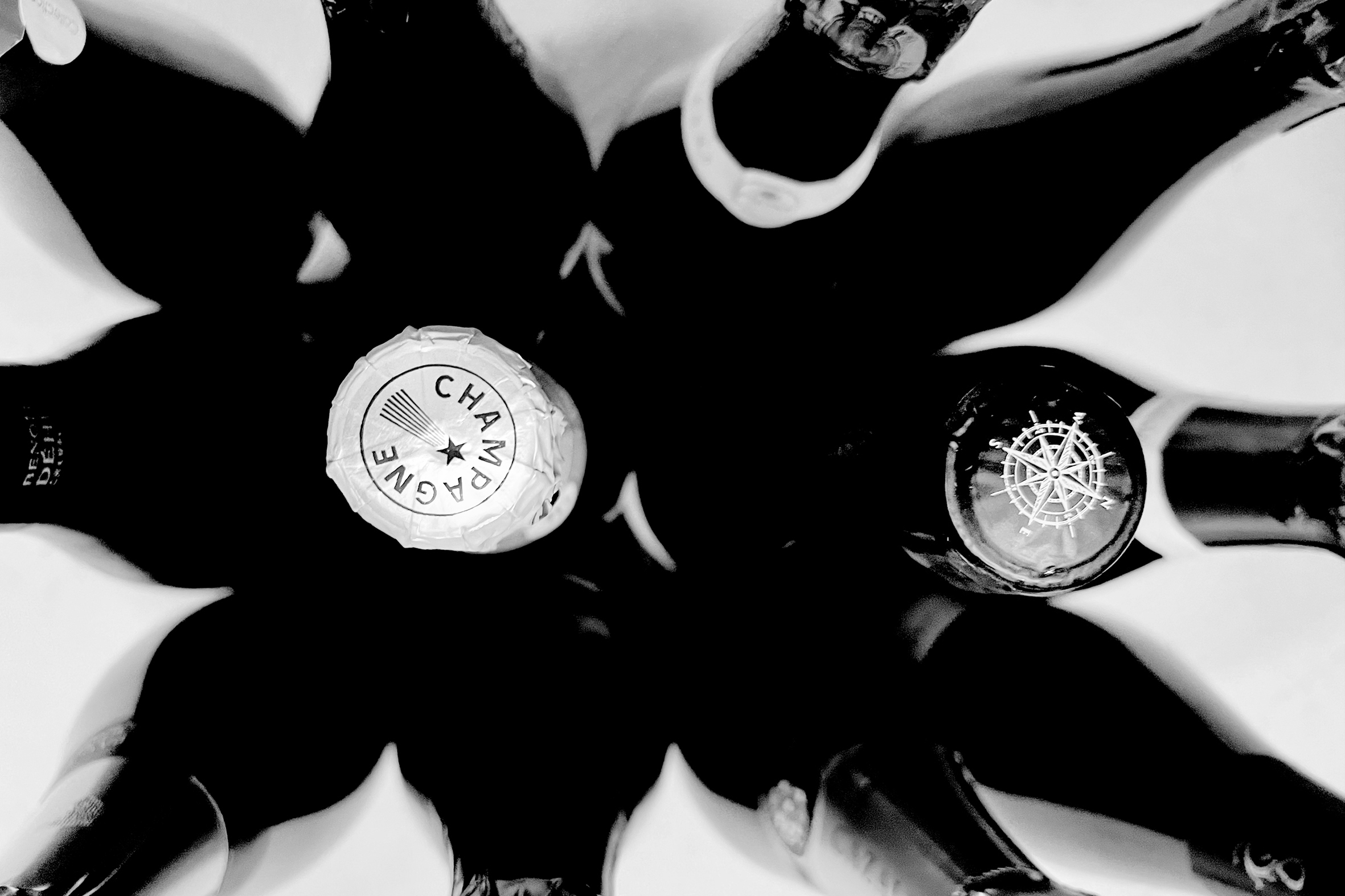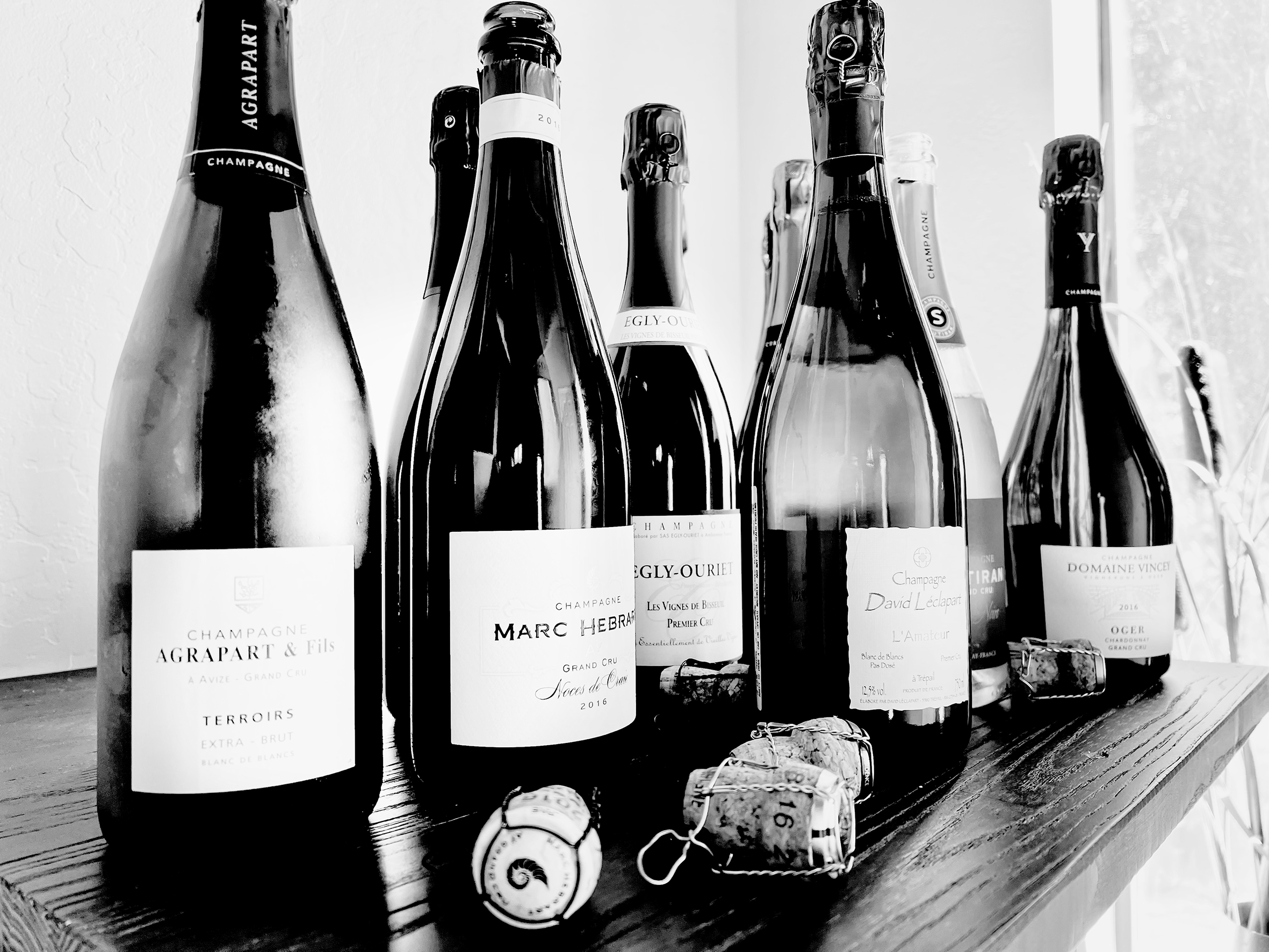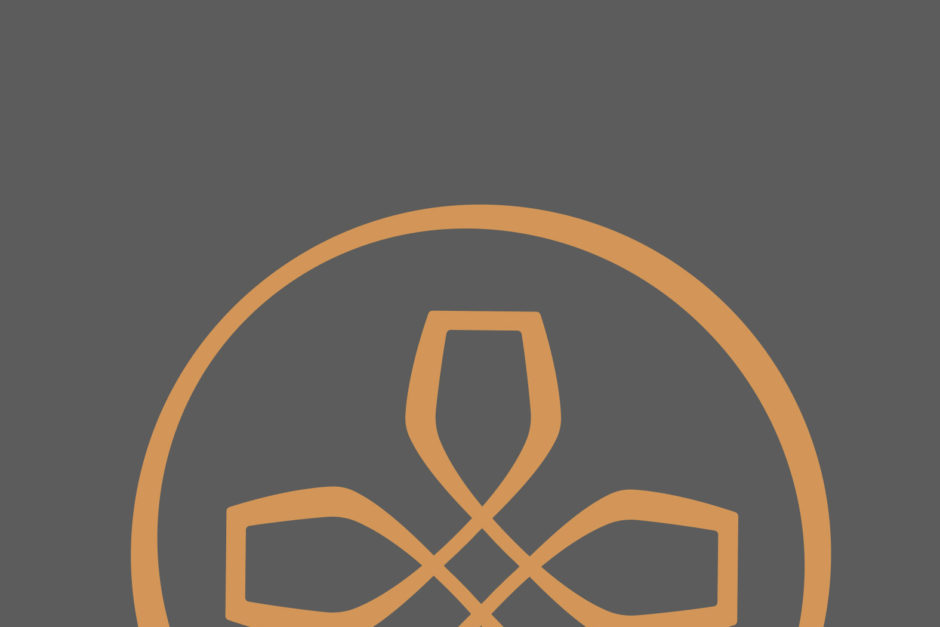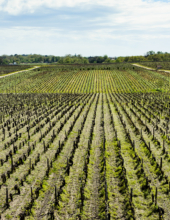03rd Nov 2022
The recent explosion in Champagne prices is painful. Former staple favorites such as Salon, Krug, Selosse, and Egly-Ouriet, which I have followed for many years, are now hard to justify. Therefore, the inspiration for writing this article was partly at least selfish interest. I want to find some high-quality, interesting Champagnes for the holiday season without remortgaging the farm.

Bought & Blind
It occurred to me I’m probably not alone in the pursuit of quality price ratio. Johan and I discussed squeezing in a trip to Champagne before the end of the year to put together a more extensive report, but we couldn’t manage it. Then I thought: let’s just buy the bottles and taste them blind. We could keep this within The Wine Independent’s budget if we set a cap at $100 a bottle and 50 wines. Et, voilà—a Champagnes Bought & Blind Report!
For the selection process, I focused on grower Champagnes and mainly under-the-radar labels, where there is still a lot of value. There are also a few entry-level cuvees from what have become expensive cult names, which I thought were worth a test drive. And I threw in a few Grandes Marques (big brands), including Cuvée Prestige bottles, first to see how they measured up when tasted blind against these more humbly priced and lesser-known wines, but also so that readers could better calibrate their tastes with my descriptions/assessments when it comes to the known-entities.
Because I was forking out our hard-earned cash for these wines, I only bought wines that I either knew would be of great quality or were recommended to me by Champagne-loving friends. Therefore, there purposely aren’t any real dogs in this article. The point of the exercise was to find the best possible recommendations of grower Champagnes available to purchase now that represent value for money.
There purposely aren’t any real dogs in this article.
The Grower Champagne Shift from Esoteric to Mainstream
In 2001, when I started my Master of Wine studies journey, I headed to self-educational Champagne with a group of six MW students from our study group. At that time, I worked in the UK for a subsidiary distributor of LVMH, doing Champagne sales and marketing in London, so we visited Veuve Clicquot and Krug (houses I already knew well) as well as many of the other Grandes Marques. But one of the most memorable visits was to see a small producer of growing interest to savvy collectors in the UK: Anselme Selosse. It was nearly impossible to get him to commit to our visit until just before we arrived, and we were informed by a friend that arranged the visit that it could either be 5 minutes or 5 hours long, depending on what he thought of us. We wound up spending most of the day with him. He was warm, passionate, and an absolute treasure trove of information and innovation. When I returned to the UK, I was able to find bottles of Selosse to buy without too much trouble and at affordable prices. Good luck with that now.
Twenty-odd years ago, grower Champagnes were esoteric wines made by eccentrics and heretics. By 2010, dozens of names had emerged as trendy, highly sought-after outliers. I lived in Singapore from 2008 until 2015, where Selosse and Egly-Ouriet were already becoming incredibly scarce and prohibitively expensive. Names such as de Sousa, Jacques Lassaigne, David Laclapart, Agrapart, Benoit Lehaye, Pierre Peters, Pierre Gimonnet, and Larmandier Bernier were becoming fashionable, largely thanks to regular Friday night grower Champagne tastings hosted at Artisan Cellars (a retailer well worth checking out if you’re in Singapore).
Now, while grower Champagnes are still not exactly mainstream, not least of all because the volumes are usually much smaller than the Grandes Marques, you can usually find some good ones in most retailers and even supermarkets that sell alcohol. Still, a few Champagnes selected for this report may be more challenging to come by because of their short supply, but most should be widely available.
Grower or Grande Marque?
Even given the recent popularity of grower Champagnes, many wine consumers continue to opt for a well-known Grande Marque. Much of this has to do with perceived reliability and uncertainty about the grower’s style. Tried, trusted, and consistent often wins over an unknown entity. It doesn’t help that the range of styles of Champagnes has broadened enormously over the last 20 years, as have consumers’ tastes. So, it is becoming increasingly difficult to understand the style of an unknown Champagne being offered and, more to the point, whether it will be your style.
When it comes to wines priced over $50 and usually closer to $100 (or more), wine buyers are cautious of experimentation. Couple that with the fact that a lot of Champagnes are sipped with friends, and for special occasions, no one wants to get it wrong. It’s no wonder that most of us resort to old favorites, and there’s nothing wrong with that. But, knowing all the big names very well, I can assure you that you’ll get a lot more bang for your buck by opting for some of the grower Champagnes in this report. What’s more, many of these grower wines have more cellaring potential than most of the standard NV Grandes Marques and are right up there in terms of quality with some big brand vintage and prestige cuvée offerings.
Knowing all the big names very well, I can assure you that you’ll get a lot more bang for your buck by opting for some of the grower Champagnes in this report.
Speaking of Style: a Word on Dosage
As part of my quality assessment, I look at overall balance, and for nascent wines not quite ready to drink, I consider the sense of balance that will develop with bottle age. Some non-dosage or low-dosage wines can be on the crisp/tart side. And some people LOVE this tartness. But, if the acid stands out and doesn’t match the ripeness of the fruit or dosage, then the wine will lose some quality points, which is reflected in my score. For many Champagne lovers, this is when a preference for a particular style trumps quality—as it should! Your personal taste should always outweigh scores. As a critic, I must score all wines with the same criteria and consistency across the board; otherwise, the scores are meaningless. Likewise, at the other end of the spectrum, some consumers don’t like overly acidic Champagnes and prefer a little more dosage. If the sweetness stands out and overshadows the fruit expression, the wine will lose a few points.
Some Champagnes labeled as Brut (0-12 g/L dosage) could more accurately be labeled as Extra Brut (0-6 g/L) or Brut Nature (0-3 g/L). In the wine names in my reviews, I have left the term used on the label within the name but put the drier style it would qualify for in brackets so that readers can understand the style more precisely by looking at the name. For example, Egly-Ouriet’s Les Vignes de Vrigny Premier Cru Brut has only 1 g/L of dosage, so after the name I inserted, ‘(Brut Nature)”. Also, I inserted the dosage amount into the tasting note whenever that information was available.
Finally, you may well ask, are most grower Champagnes too Extra Brut (extra dry) for you? A lot of grower Champagnes indeed have less dosage than most Grande Marque NVs. Most of the growers I tasted were in the Extra Brut category (less than 6 g/L). But—and this is big BUT—I’m noting that the grapes for these grower wines are often harvested riper than is often the case for Grandes Marques. Couple this with the fact that the recent vintages featuring in most of these wines (e.g., 2015, 2016, 2018, and 2019) were warmer years, and you automatically tend to get richer, more flavorsome, less acidic, better-balanced wines that really don’t need as much dosage to give a harmonious experience on the palate. If in doubt, read the tasting note. I will never hesitate to say if something is on the tart side or if the sweetness stands out.
Perpetual Reserve Champagnes - Réserve Perpétuelle
Réserve Perpétuelle is a term used on some grower Champagne labels and a style I enjoy if done well. Rather than storing reserve wines in separate vessels to use as blending components, as is traditional for the Grandes Marques, smaller grower houses sometimes keep their reserves in a single vessel or collection of collective vessels—like a solera system. This method tends to layer in rich, mature, nut and caramel-like notes among the youthful fruitiness. A few Champagnes in this article that use this method with fantastic results include:
Hure Freres, Memoire Extra Brut
Ruppert Leroy, 11, 12, 13... Brut Nature
Dehours & Fils, Lieux Dit Brisefer Reserve Perpetuelle Extra Brut
J M Sélèque, Solessence Nature Élevage Prolongué Brut Nature

Finding Your Preferred Champagne Style
To make buying decisions that much easier for readers, below I’ve sorted all the Champagnes tasted into one of four general style categories I created to better match recommendations to readers’ preferences. Listed from the most delicate to the richest, these categories are:
Delicately Perfumed, Subtle Floral, and Mineral Flavors, Restrained, Acid and Chalk-Driven Finish (green), e.g., Salon or Dom Perignon.
Laherte Freres, Les Grandes Crayeres Blanc de Blancs Extra Brut
Agrapart, Terroirs Blanc de Blancs Grand Cru Extra Brut (Disgorged March 2022)
Taittinger, Comtes de Champagne Rose Brut
Waris Hubert, Albescent Blanc de Blancs Grand Cru Brut, Avize
Savart, Bulle de Rose Premier Cru Extra Brut (Disgorged Jan 2022)
Egly Ouriet, Les Vignes de Vrigny Premier Cru Brut (Brut Nature) (Disgorged July 2020)
Claude Cazals, Blanc de Blancs Grand Cru Cuvee Vive Extra Brut (Disgorged Nov. 2021)
David Leclapart, l'Amateur Blanc de Blancs Premier Cru Pas Dosé (2018)
Marie Courtin, Resonance Pinot Noir Extra Brut
Jacques Lassaigne, Les Vignes de Montgueux Blanc de Blancs Extra Brut (Disgorged April 2022)
Pierre Peters, Cuvee de Reserve Blanc de Blancs Grand Cru Brut (Disgorged Oct. 2021)
Lancelot Pienne, Table Ronde Blanc de Blancs Grand Cru Extra Brut (Disgorged July 2020)
Mousse Fils, Les Vignes de Mon Village Blanc de Meuniers (Brut Nature) (Disgorged June 2020)
Larmandier-Bernier, Terre de Vertus Premier Cru
Larmandier Bernier, Latitude Blanc de Blancs Extra Brut (Disgorged Sept. 2021)
Robert Moncuit, Blanc de Blancs Grand Cru
Pierre Paillard, Les Mottelettes Blanc de Blancs Bouzy Grand Cru Extra Brut
Roger Pouillon et Fils, Les Terres Froides Premier Cru Extra Brut (2018)
Pure Crunchy Apples, Fresh Berries, and/or Citrus fruits, Light-on-its-Feet, Zesty/Lifted Flavors, Tangy Finish, e.g., Veuve Clicquot Brut NV or Taittinger Brut NV.
R&L Legras, Saint-Vincent Grand Cru (Extra Brut), Chouilly
R&L Legras, Presidence Vieilles Vignes Blanc de Blancs Grand Cru Brut (Extra Brut), Chouilly
Laherte Freres, Les Longues Voyes Blanc de Noirs Premier Cru Extra Brut (2017)
Veuve Clicquot, La Grande Dame Brut (Extra Brut)
Egly-Ouriet, Les Vignes de Bisseuil Premier Cru Extra Brut (Disgorged Nov. 2021
Domaine Nowack, La Fontinette Extra Brut (2018)
Benoit Dehu, Initiation (Brut Nature) (2018)
Dhondt-Grellet, Les Terres Fines Blanc de Blancs Premier Cru (Disgorged Sept. 2020)
Mousse Fils, Terre d'Illite Blanc de Noirs Extra Brut
Etienne Calsac, Les Rocheforts Blanc de Blancs Premier Cru Extra Brut (Disgorged Sept. 2020)
Guillaume Sergent, Les Pres Dieu Blanc de Blancs Premier Cru Extra Brut (Disgorged June 2019)
Bereche et Fils, Reserve Brut (Disgorged Nov. 2021)
Bereche et Fils, Vallee de la Marne Rive Gauche Extra Brut
Bold, Fruit Salad / Berry Compote Aromas and Flavors, Plenty of Mid-Palate Density, Creamy Finish, e.g., Bollinger Special Cuvee or Pol Roger Brut NV.
Benoit Lahaye, Millesime Extra Brut, Bouzy
Soutiran, Perle Noire Grand Cru Brut (Disgorged Feb. 2021)
Clandestin, Les Semblables Austral Brut Nature (Disgorged Oct. 2020)
Perrier Jouet, Belle Epoque Brut
Ruppert Leroy, 11, 12, 13... Brut Nature (Disgorged 2019)
Bollinger, PN VZ16, Champagne
Suenen, C+C Blanc de Blancs Grand Cru Extra Brut (2017)
Georges Laval, Cumieres Premier Cru Brut Nature (2019)
Guillaume Sergent, Le Chemin Chappes Premier Cru Extra Brut (Disgorged July 2021)
J. Lassalle, Rose Premier Cru Brut (Disgorged Oct. 2020)
Domaine Nowack, La Tuilerie Chardonnay Extra Brut (2015)
Domaine Nowack, Les Bauchets Pinot Noir Extra Brut (2015)
Jean Vesselle, Rose de Saignee Brut (Disgorged July 2020)
Veuve Fourny & Fils, Rose Premier Cru Brut
Flamboyant, Exotic Spice and Riper Fruit (Juicy Pears, Tropical, and/or Stone Fruit), Rich, Opulent Flavors, Toasty/Nutty Finish, e.g., Krug Vintage, Henri Giraud Fût de Chêne or Jacques Selosse Vintage.
Marc Hebrart, Noces de Craies Blanc de Noirs Grand Cru Extra Brut, Ay
Dehours & Fils, Lieux Dit Brisefer Reserve Perpetuelle Extra Brut (Disgorged Feb. 2020)
Savart, L'Ouverture Premier Cru Extra Brut (Disgorged Jan 2022)
Savart, L'Accomplie Premier Cru Extra Brut (Disgorged Jan 2022)
Hure Freres, Memoire Extra Brut (Disgorged June 2021)
Domaine Vincey, Oger Grand Cru Chardonnay Extra Brut
Jean-Marc Seleque, Solessence Nature Elevage Prolongue Brut Nature (Disgorged Sept. 2021)
Dremont Pere et Fils, Ephemere 014 (Savart) Grand Cru Extra Brut (2018)
I want to stress that none of these categories is qualitatively better than the others, and they simply offer a way to segment a broad range of styles so that consumers can better home in on the styles they love.
Happy Champagne Hunting!
-
Article, Photography & Reviews by Lisa Perrotti-Brown MW

PRODUCERS IN THIS ARTICLE
> Show all wines sorted by scoreMore articles

Bordeaux 2023 Vintage Report and Reviews from Barrel
09th May 2024
649 tasting notes

Cathiard Vineyard New Releases
02nd May 2024
3 tasting notes

Bordeaux 2023 Preliminary Vintage Report and Reviews from Barrel
29th Apr 2024
56 tasting notes

2021 Bordeaux in Bottle and A Modest Proposal
24th Apr 2024
599 tasting notes
Show all articles